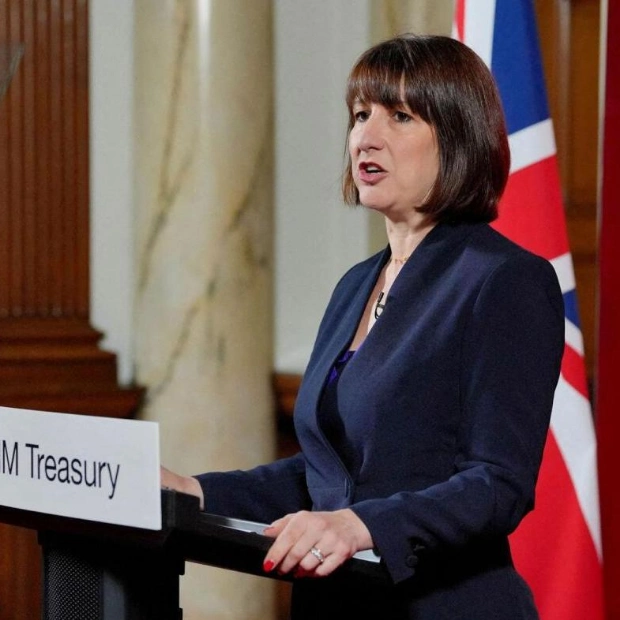A view of the London financial district. Reuters File Photo
The US economy is demonstrating resilience after recovering from the Covid-19 pandemic, but the eurozone's outlook is more pessimistic, according to IMF forecasts released on Tuesday. These forecasts highlight the impact of recent crises and deeper underlying issues. In its latest World Economic Outlook report, the International Monetary Fund (IMF) revised its 2025 eurozone growth forecast down from 1.5 per cent in July to 1.2 per cent, attributing this to manufacturing challenges, particularly in countries like Germany. In contrast, the world's largest economy is expected to grow by 2.2 per cent next year.
The divergence in economic paths between the United States and the eurozone has become more pronounced over the past two years. IMF figures show that the US economy grew by 2.9 per cent in 2023, significantly outpacing the eurozone's 0.4 per cent growth. The fund anticipates the US economy to expand by 2.8 per cent in 2024, again surpassing the euro area's forecasted growth of 0.8 per cent. This disparity is partly due to Europe experiencing two major shocks, while the United States only one, according to EY chief economist Gregory Daco.
After recovering from the pandemic, which led to historic global recessions, European countries were further impacted by the effects of Russia's invasion of Ukraine in February 2022. This conflict exacerbated energy price hikes and disrupted supply chains in the region, with the United States experiencing less impact due to its geographical distance from the conflict and greater energy independence. Notably, the war has significantly affected Germany, the eurozone's largest economy, which saw its economy contract in 2023.
The IMF's latest report predicts that the German economy will remain stagnant this year, with only a 0.8 per cent expansion expected in 2025, down from the July projection of 1.3 per cent growth. Persistent manufacturing weakness is cited as a drag on growth in countries like Germany and Italy. While Italy's domestic demand is expected to benefit from a European Union-financed recovery plan, Germany is struggling with fiscal consolidation and a sharp decline in real estate prices.
However, the IMF notes that "in the euro area, growth seems to have reached its lowest point in 2023." France, the second-largest EU economy, is projected to achieve modest growth of 1.1 per cent for both this year and the next. EY's Daco highlights that the United States benefits from more favorable structural factors, including a younger population, higher investment rate, and greater productivity, which double its growth prospects compared to Europe.
Additional factors contributing to the US economic strength include government support for households and businesses during the pandemic, which has sustained consumption. The government's CHIPS and Science Act, as well as the Inflation Reduction Act, aimed at boosting domestic semiconductor and clean energy industries, are also stimulating economic growth. In contrast, Europe is grappling with these significant initiatives. A report by former European Central Bank President Mario Draghi, unveiled in September, aims to narrow Europe's economic gap with the United States.
"It is crucial to swiftly follow up, with concrete and ambitious structural policies, on Mario Draghi's proposals for enhancing European competitiveness," said ECB president Christine Lagarde last Thursday.
Source link: https://www.khaleejtimes.com






